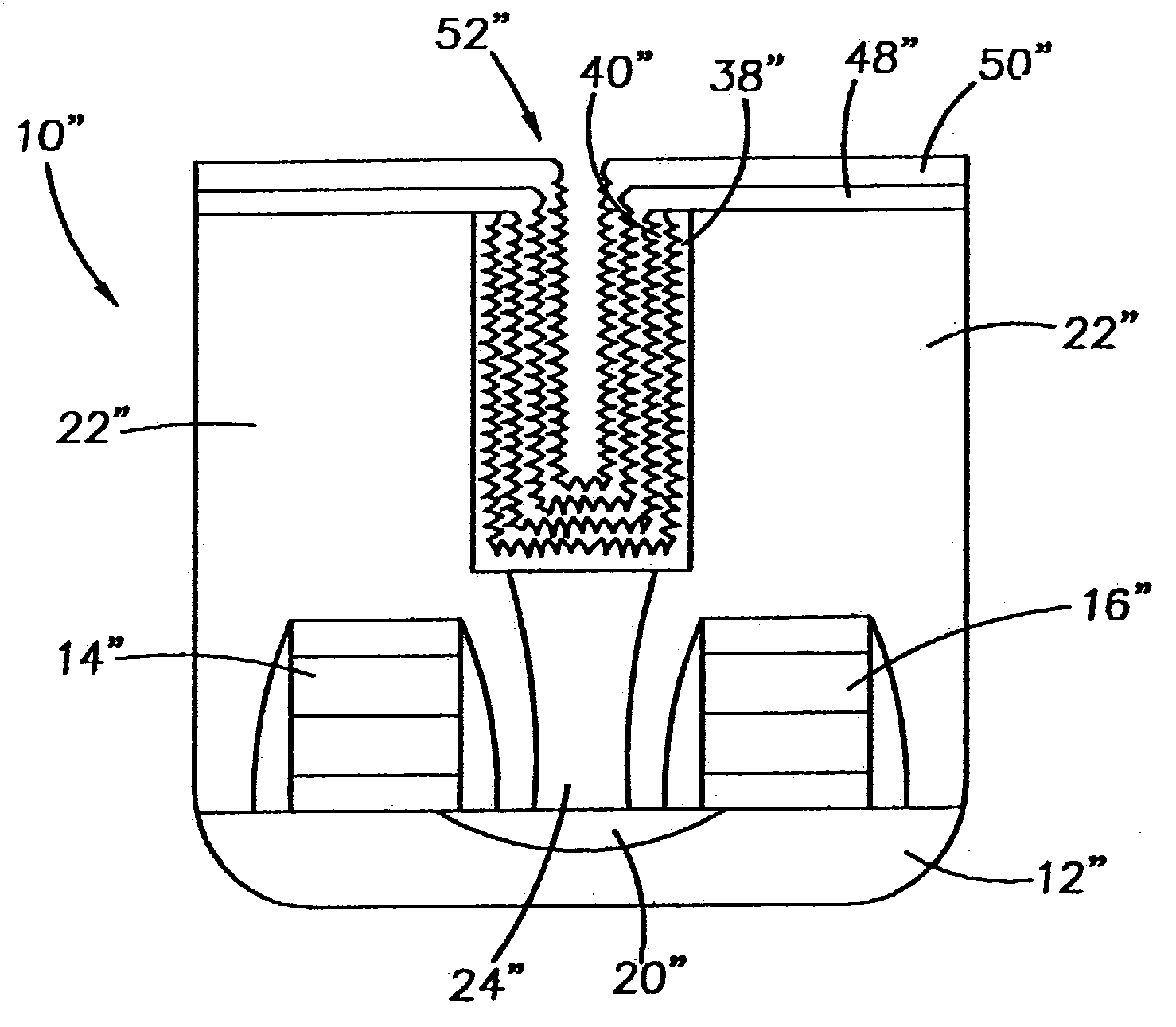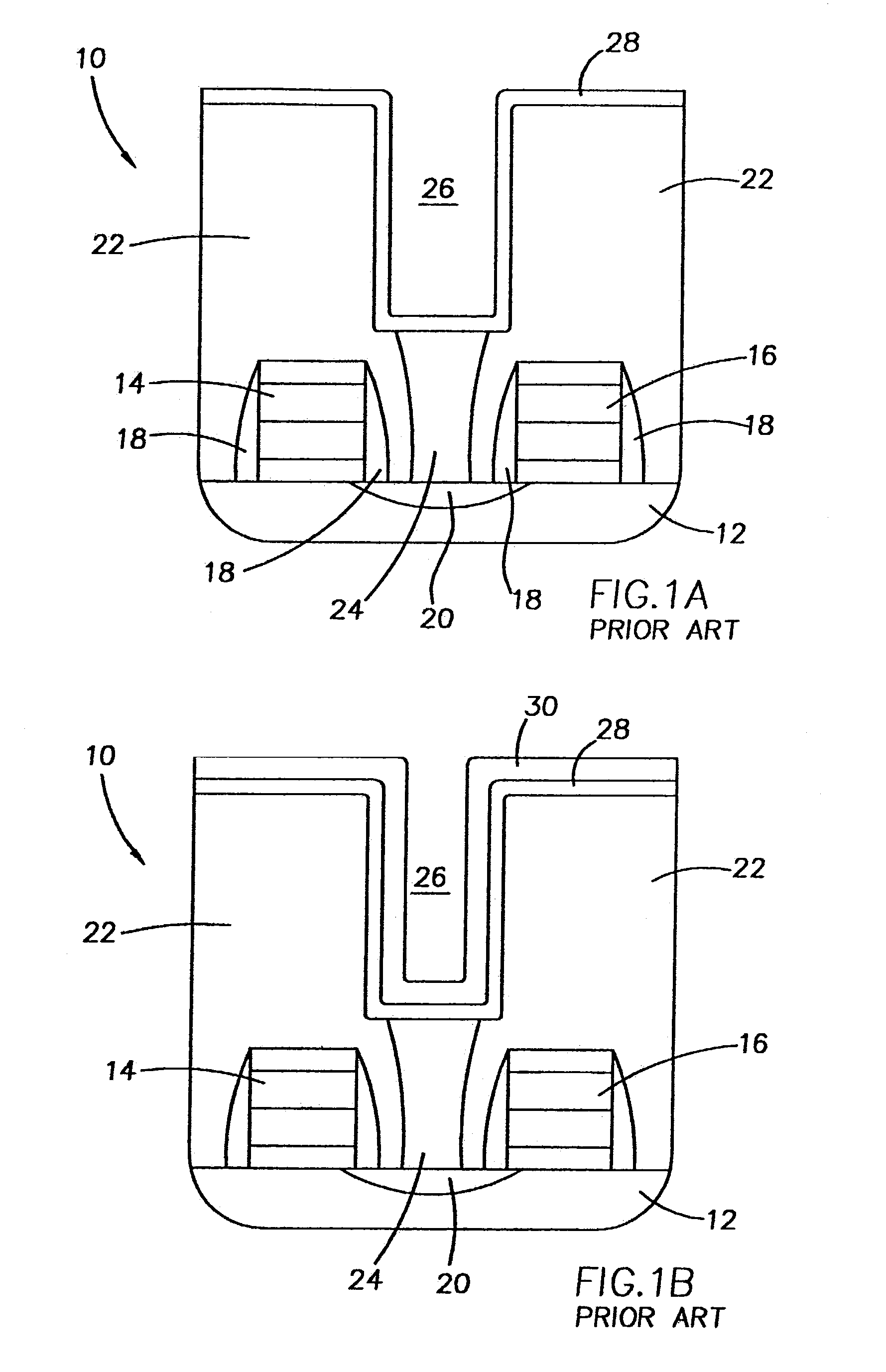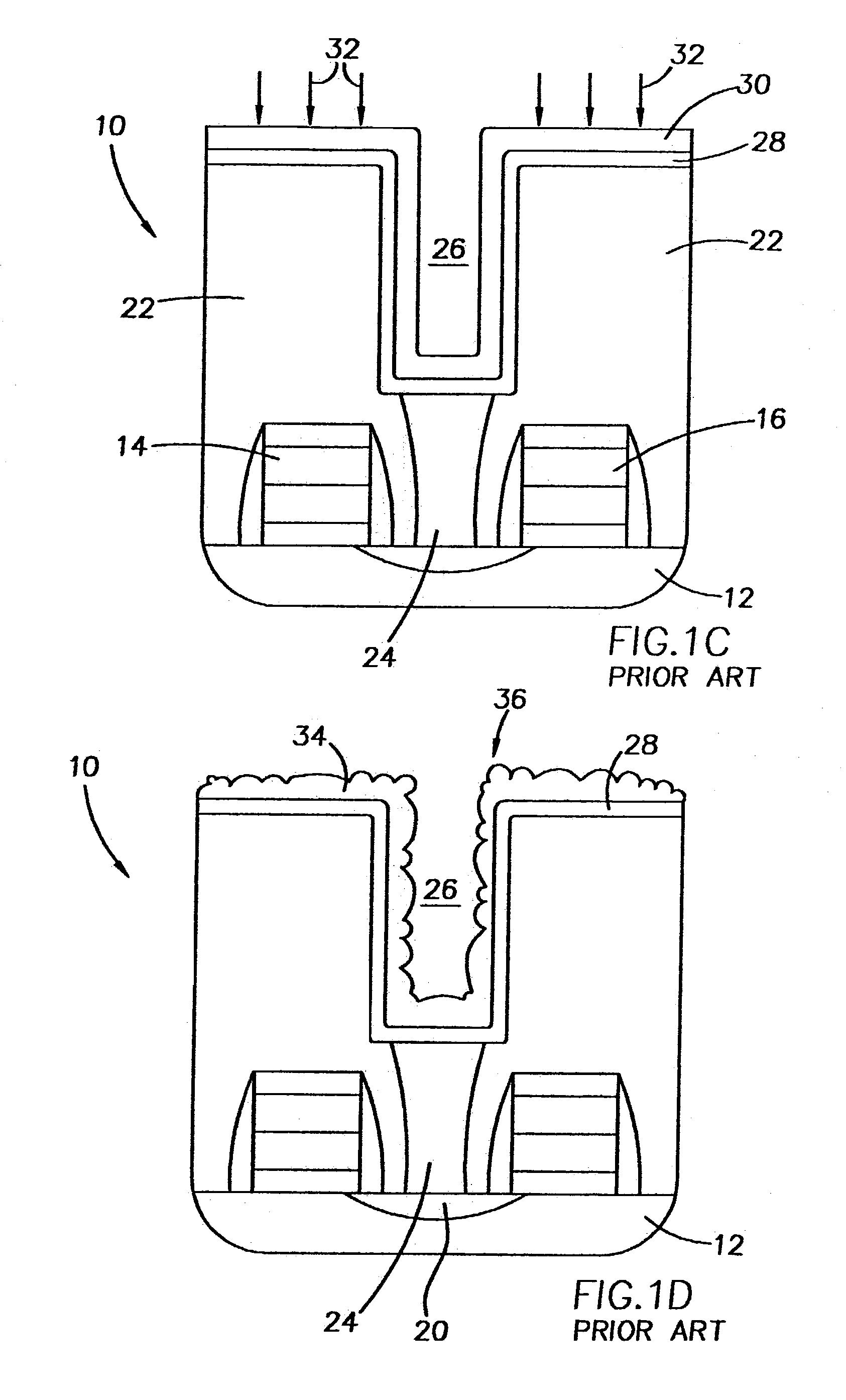Method for enhancing electrode surface area in DRAM cell capacitors
- Summary
- Abstract
- Description
- Claims
- Application Information
AI Technical Summary
Benefits of technology
Problems solved by technology
Method used
Image
Examples
first embodiment
[0024]a method according to the invention is described with reference to FIGS. 2A through 2H, in a method of forming a lower electrode in a capacitor of a DRAM cell.
[0025]Referring to FIG. 2A, a wafer fragment 10′ is shown at a preliminary processing step in the formation of a capacitor. The wafer fragment 10′ in progress can comprise a semiconductor wafer substrate or the wafer along with various process layers formed thereon, including one or more semiconductor layers or other formations, and active or operable portions of semiconductor devices.
[0026]The wafer fragment 10′ comprises a substrate 12′ such as monocrystalline silicon, wordlines 14′, 16′, and a diffusion region (active area) 20″ formed in the substrate 12′ between the wordlines, the diffusion region being in the form of a source / drain region. A layer 22′ of BPSG or other suitable insulative material has been deposited over the substrate 12′ and the wordlines 14′, 16′. A plug 24′ comprising doped polycrystalline, has be...
second embodiment
[0045]Referring now to FIGS. 3A through 3F, a method of the invention is described with reference to forming a lower electrode 42″ in a capacitor 52″. Referring to FIG. 3A, a wafer fragment 10″, similar to the wafer fragment 10′, is shown at a preliminary processing step. The wafer fragment 10″ comprises a substrate 12″, wordlines 14″, 16″, a diffusion region 20″, an insulative layer 22″, plug 24″, and a container 26″.
[0046]Referring to FIG. 3B, a first conductive metal is conformally deposited onto the insulative layer 22″ to form an underlayer 54″, the first conductive metal being platinum (Pt) in the illustrated example. The first conductive metal can be deposited using conventional methods, such as by chemical vapor deposition (CVD), or physical vapor deposition (e.g., sputtering).
[0047]A texturizing layer 38″ is then formed by depositing successive monolayers 56″ of a second conductive metal that is dissimilar to the first conductive metal over the underlayer 54″, the second co...
PUM
 Login to View More
Login to View More Abstract
Description
Claims
Application Information
 Login to View More
Login to View More - R&D
- Intellectual Property
- Life Sciences
- Materials
- Tech Scout
- Unparalleled Data Quality
- Higher Quality Content
- 60% Fewer Hallucinations
Browse by: Latest US Patents, China's latest patents, Technical Efficacy Thesaurus, Application Domain, Technology Topic, Popular Technical Reports.
© 2025 PatSnap. All rights reserved.Legal|Privacy policy|Modern Slavery Act Transparency Statement|Sitemap|About US| Contact US: help@patsnap.com



